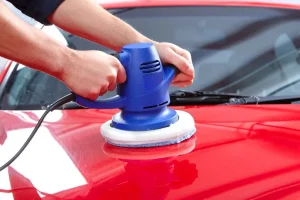Regular maintenance of your car’s brakes is crucial for safe driving. Neglecting them can lead to dangerous situations, from minor fender-benders to severe accidents. If you’re a car enthusiast or a DIY mechanic, you probably revel in the satisfaction of fixing things yourself. This blog post will walk you through how to fix your car’s brakes, ensuring that your vehicle remains safe and roadworthy.
Introduction to Brake Maintenance
Your car’s brakes are essential for your safety and the safety of others on the road. Well-maintained brakes ensure that your vehicle stops effectively and efficiently. Neglecting brake issues can result in longer stopping distances and increased risk of accidents. Understanding how to maintain and repair your brakes is not just a valuable skill; it’s also a way to ensure you’re driving safely.
In this guide, we’ll cover everything you need to know about brake maintenance. From recognizing the signs of brake issues to preparing for the repair and executing it step-by-step, we’ve got you covered. By the end of this guide, you’ll have the knowledge and confidence to tackle brake repairs on your own.
Signs Your Brakes Need Fixing
Before you start any repair work on your brakes, it’s important to know the common signs that indicate they need attention. One of the most obvious signs is a squeaking or squealing noise when you apply the brakes. This noise often indicates that the brake pads are worn and need replacing.
Another sign to watch out for is a vibration or pulsation in the brake pedal. This can be a symptom of warped brake rotors, which need immediate attention. Additionally, if you notice that your car takes longer to stop than usual or the brake pedal feels spongy, it’s time to inspect your brakes. Addressing these issues promptly can prevent more serious problems down the line.
Preparing for the Repair
Before you start the repair, gather all the necessary tools and equipment. You’ll need a jack and jack stands, a lug wrench, a C-clamp, brake cleaner, new brake pads, and possibly new rotors, depending on the condition of your current ones. Safety is paramount, so make sure you have protective gloves and safety glasses.
Ensure your car is on a flat, stable surface before jacking it up. Never work on a vehicle that’s only supported by a jack; always use jack stands for added safety. Once your car is securely lifted, you can remove the wheels to access the brake components. Having everything prepared and taking necessary safety precautions will make the repair process smoother and safer.
Step-by-Step DIY Brake Repair Guide
Inspecting the Brakes
Start by inspecting the brake pads and rotors. The brake pads should have at least 1/4 inch of material left. If they’re thinner, they need replacing. Check the rotors for any deep grooves or signs of warping. If the rotors are damaged, it’s best to replace them to ensure optimal braking performance.
Removing the Old Brake Pads
First, loosen the lug nuts on the wheel, then jack up your car and place it on jack stands. Remove the wheel to expose the brake caliper. Use a socket wrench to remove the caliper bolts and slide the caliper off the rotor. Be careful not to strain the brake line. Use a C-clamp to compress the caliper piston, making room for the new brake pads.
Installing the New Brake Pads
Place the new brake pads into the caliper bracket. Ensure they fit snugly and align with the brake rotor. Slide the caliper back over the rotor and secure it with the caliper bolts. Make sure everything is tightened to the manufacturer’s specifications. Repeat the process for the other wheels.
Reassembling and Testing
Once all the new brake pads are installed, reattach the wheels and lower the car to the ground. Tighten the lug nuts securely. Before driving, pump the brake pedal a few times to ensure the brake pads are properly seated. Take your car for a test drive at low speeds to ensure the brakes are working correctly.
Tips for a Successful Repair
Take Your Time
Rushing through the repair process can lead to mistakes. Take your time to ensure each step is done correctly. Double-check your work before moving on to the next step. A thorough job ensures your safety and the longevity of the brake components.
Refer to the Manual
Always refer to your vehicle’s manual for specific instructions and torque specifications. Different cars have different requirements, and following the manufacturer’s guidelines is crucial for a successful repair. The manual provides valuable information tailored to your specific vehicle model.
Troubleshooting Common Issues
If you encounter any issues during the repair, don’t panic. Common problems include difficulty removing rusted bolts or fitting new pads. Use penetrating oil to loosen stubborn bolts and ensure the correct pad size. If the brakes still feel off after reassembly, recheck the installation and ensure the brake fluid level is adequate.
Conclusion
Maintaining your car’s brakes is essential for safety and performance. Understanding how to identify issues, prepare for repairs, and execute them properly empowers you as a car enthusiast or DIY mechanic. By following this guide, you can confidently tackle brake repairs, ensuring your vehicle remains safe and roadworthy.
Remember, while DIY repairs are rewarding, don’t hesitate to consult a professional if you’re unsure about any step. Your safety is paramount, and professional mechanics have the expertise to handle complex brake issues. Share your brake repair experiences with us and join our community of car enthusiasts committed to safe and effective vehicle maintenance.

